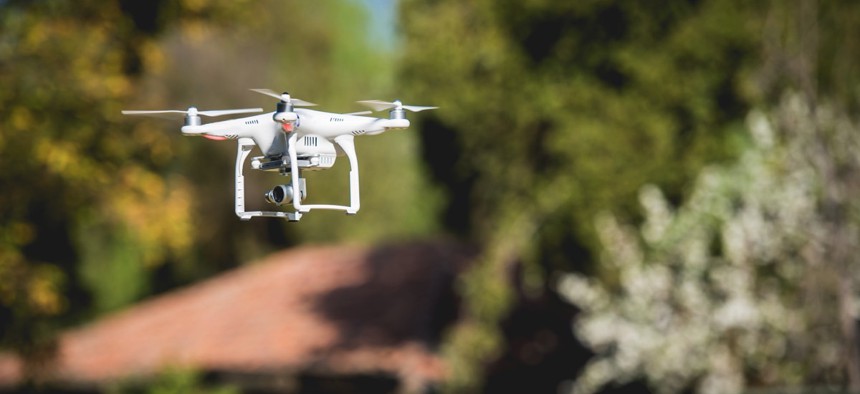How Cincinnati's Public Utilities Have Deployed Drone Aircraft

“Using drone technology we can do it in a matter of minutes, versus a matter of hours or days, and redirect human resources to other facets of the utility,” according to City Manager Harry Black.
While public safety agencies are often the local trailblazers when it comes to using unmanned aircraft systems for special tasks, the use of drones in Cincinnati was spearheaded by the city's water and stormwater utilities.
Both the Stormwater Management Utility and Greater Cincinnati Water Works purchased drones prior to the Queen City adopting its unmanned aerial system administrative regulation.
That regulation—a dynamic document written with the rapid evolution of drone technology in mind—took about a month for the Law Department to draft and was issued on Aug. 22 by the city manager’s office.
“A big area we are sensitive to and will remain mindful of is the whole notion of privacy, and we are constantly monitoring federal regulations and guidelines,” City Manager Harry Black told Route Fifty in an interview. “The most pressing thing was realizing we had these two drones and wanted to make sure we had some structure around them as quickly as possible.”
GCWW is one of the leading public sector water utilities in the country where innovation is concerned, Black added, so it makes sense it would pioneer drone use in Cincinnati.
Both agencies bought DJI Phantom 4s, GCWW’s with extra batteries, through the standard procurement process to improve field operative flexibility and effectiveness.
The water utility’s drone will be used for routine inspections of water towers and sources like reservoirs and the Ohio River, as well as for emergency response in the event of contamination or tampering.
Meanwhile SMU, which was recently folded into GCWW, will use its drone for condition assessments of natural and channelized creeks, culverts and flap gates looking for evidence of erosion or damage. The drones can also help evaluate assets during flooding and inspect National Pollutant Discharge Elimination System sites to ensure Ohio Environmental Protection Agency compliance on things like silt control measures.
“I think that over time we’ll integrate use of this technology in such a way that it’s an organic part of how we do this kind of work,” Black said. “Using drone technology we can do it in a matter of minutes, versus a matter of hours or days, and redirect human resources to other facets of the utility.”
Don’t expect mass deployment in Cincinnati just yet, as the two drones function as a pilot project of sorts.
Both UASs are under 55 pounds and, thus, don’t require public certificates of authorization according to Cincinnati’s administrative regulation, but they still must be registered with the Federal Aviation Administration. The city is open to using larger drones in the future and wants them to be procured like other machinery for governmental use, according to city staff:
After analyzing the submissions, the Law Department’s opinion is that a single, detailed policy for drones—a single process or set of rules for acquisition, training of staff, and obtaining FAA approval—is not necessarily feasible and would not be particularly helpful. In addition to the variety of intended uses, departments also seem to have varying understanding of the current regulations applicable to drones. It seems clear that what is needed is a policy requiring consultation with the Law Department, as well as Purchasing, before departments take any actions with regard to drones.
To avoid needing a COA, the policy requires pilots to pass a test and be vetted by the Transportation Security Administration and their drones fly in sight, under 400 feet, only during the day, and no faster than 100 mph. The drones also can’t be operated above people, out of a moving vehicle or carrying hazardous materials.
Cincinnati also included provisions for contracting drone operation out to third parties, and other uses are being explored.
“I think the natural next progression would be looking at how to use drones to support our public safety efforts,” Black said. “Flying over the scene of a fire or flying into an intense police situation, that would perhaps allow us to avoid sending first responders into potentially dangerous situations while providing us with the visibility and intelligence to make the best tactical decisions possible.”
Dave Nyczepir is a News Editor at Government Executive's Route Fifty and is based in Washington D.C.
NEXT STORY: Big Money Pours into State Ballot Issue Campaigns






